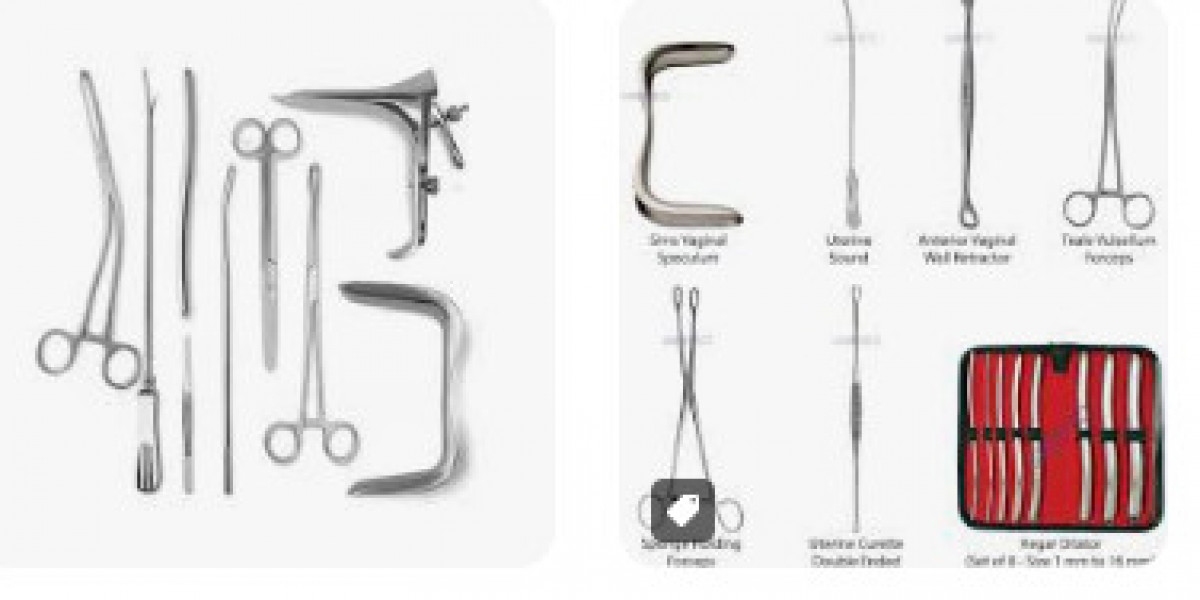Gynecology instruments play a crucial role in the diagnosis, examination, and treatment of conditions related to the female reproductive system. These highly specialized tools are designed to support gynecologists in performing both routine and complex procedures with safety, precision, and care. Whether used in outpatient clinics, hospitals, or surgical settings, gynecology instruments form the backbone of effective women’s healthcare.
1. Importance of Gynecology Instruments
Accurate gynecological care depends on reliable instruments that enable doctors to visualize, examine, and operate with confidence. High-quality instruments:
Improve diagnostic accuracy
Ensure patient comfort
Reduce procedural risks
Enhance surgical efficiency
Support better clinical outcomes
As women’s healthcare continues to advance, the demand for precision-engineered gynecology instruments remains stronger than ever.
2. Common Gynecology Instruments and Their Uses
1. Speculums
Used to open and examine the vaginal canal.
Available in Cusco, Graves, and Sims designs.
Essential for routine pelvic exams, pap smears, and minor procedures.
2. Tenaculum
A sharp-pointed, hook-like instrument.
Helps stabilize the cervix during procedures like IUD insertion or biopsies.
3. Uterine Sound
Measures the depth and direction of the uterine cavity.
Ensures safe insertion of intrauterine devices and other instruments.
4. Dilators (Hegar, Pratt, etc.)
Used for gradual dilation of the cervical canal.
Helpful during surgical procedures and delivery management.
5. Curettes
Used to scrape or remove tissue from the uterine lining.
Common in Dilation & Curettage (D&C) procedures.
6. Vaginal Retractors
Provide clear visualization of the vaginal walls.
Used during surgeries and examinations requiring greater exposure.
7. Forceps (Babcock, Allis, Foerster)
Assist in holding tissues gently without causing damage.
Important during hysterectomies, biopsies, and obstetric procedures.
8. Scissors (Mayo, Metzenbaum)
Designed for cutting delicate tissues or surgical sutures.
Available in straight and curved variants for specific uses.
3. Surgical Gynecology Instruments
More advanced procedures such as hysterectomy, laparoscopy, or tumor removal require precision surgical tools, including:
Laparoscopic trocars
Uterine manipulators
Laparoscopic scissors
Endoscopic graspers
Electrosurgical instruments
These tools support minimally invasive techniques, reducing recovery time and postoperative complications.
4. Features of High-Quality Gynecology Instruments
Reliable gynecology instruments are made with:
✔ Medical-grade stainless steel for durability
✔ Ergonomic design to reduce hand fatigue
✔ High corrosion resistance
✔ Smooth, precise working edges
✔ Autoclavable compatibility for safe sterilization
These features ensure safety, longevity, and optimal performance in clinical practice.
5. Why Quality Matters in Gynecology Instruments
Women’s healthcare requires sensitivity, accuracy, and dependability. Poor-quality instruments can cause:
Increased patient discomfort
Inaccurate results
Tissue damage
Longer procedure times
Increased risk of infection
Investing in premium gynecology instruments ensures the well-being of both patients and practitioners.
Conclusion
Gynecology instruments are essential tools that support a wide range of diagnostic and surgical procedures in women’s healthcare. From routine examinations to specialized surgeries, these instruments help gynecologists deliver precise, safe, and effective treatment. As medical technology advances, the quality, design, and functionality of gynecology instruments continue to evolve—improving patient care and shaping the future of women’s health.













